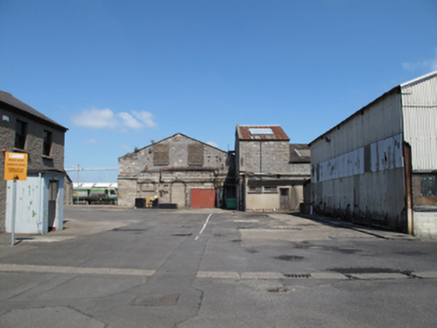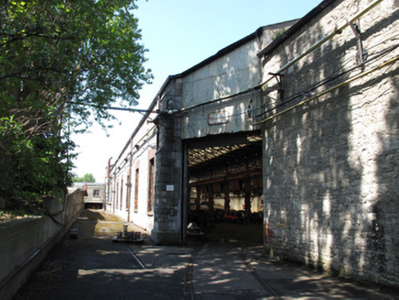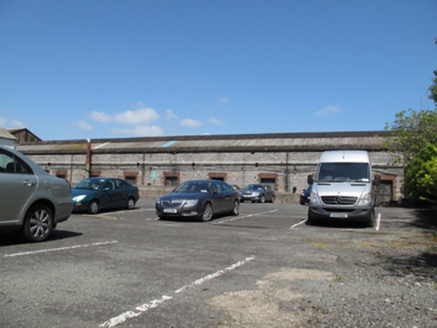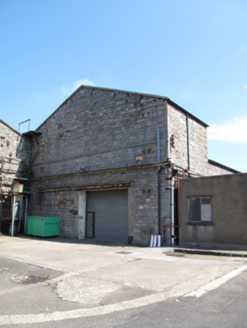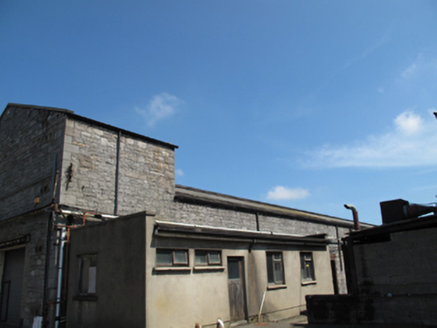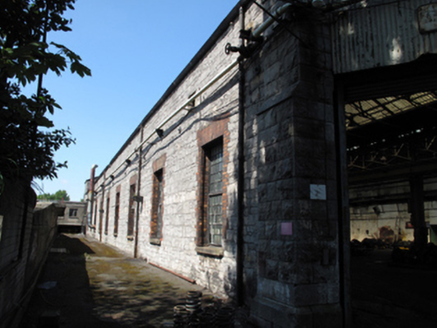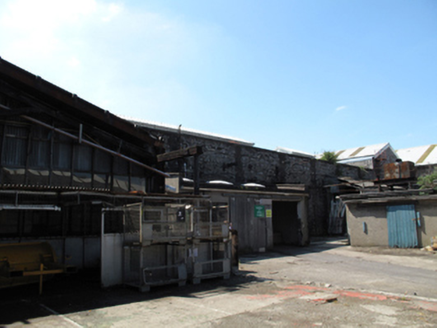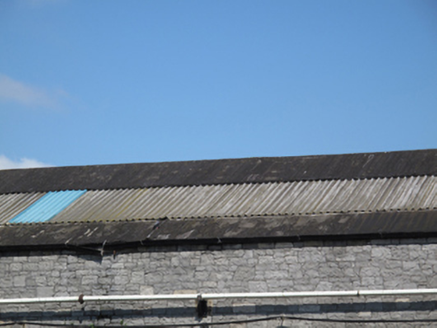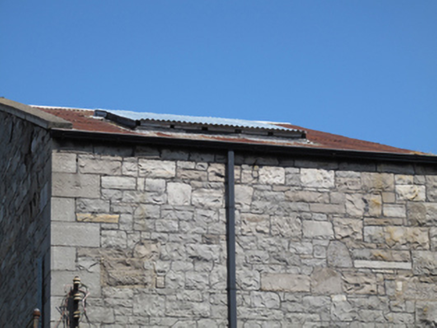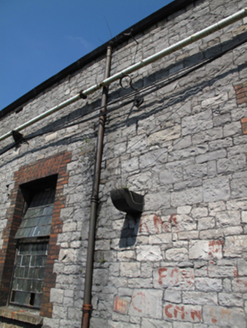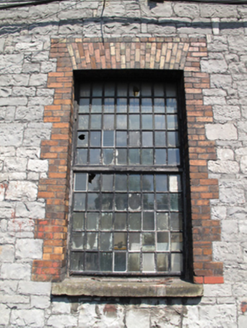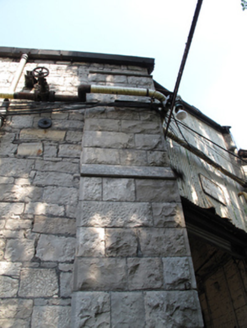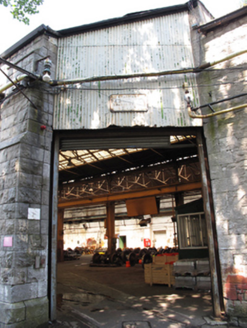Survey Data
Reg No
50080424
Rating
Regional
Categories of Special Interest
Architectural, Social, Technical
Original Use
Workshop
In Use As
Workshop
Date
1845 - 1855
Coordinates
311282, 233357
Date Recorded
29/05/2013
Date Updated
--/--/--
Description
Attached eight-bay double-height former boiler shop, built c.1850, forming west end of south range of railway works buildings surrounding central yard, having raised bay to west end. M-profile pitched asphalt roof with some panels of corrugated sheeting as rooflights and cast-iron rainwater goods. Corrugated-iron roof to raised bay, render coping. Snecked dressed calp limestone walls with cut limestone quoins, cast-iron wall ties, rusticated corner buttress to front (east) of south elevation, rusticated limestone plinth course. Square-headed window openings with red brick block-and-start surrounds, masonry sills and timber framed windows to south elevation. Square-headed door opening set at an angle to south-east corner, with corrugated-iron over, cast iron plaque reading ‘FABRICATION SHOP’ and steel roller-shutter. Chamfered tooled cut stone reveals. Steel rails leading from doorway.
Appraisal
As the original boiler shop, this workshop was of paramount importance in the fabrication and repair of steam locomotives. Its form suggests an almost unplanned element to the development of Inchicore as an industrial manufacturing complex, with buildings constructed to cope with needs as they arose. This building is similar in form, fabric and character to its neighbouring buildings, providing continuity across the complex. The corner buttress is notable for its margined edges and well-cut blocks, typical features of railway bridges. As the building pre-dates the majority of railway bridges on the line, it may have been a test piece by masons. Red brick detailing is used to good effect to provide a pleasing visual and textural contrast with the limestone construction. The development of the Works was responsible for the transformation of this area from rural agricultural to an industrial village in the nineteenth century. The railway network transformed Ireland, linking remote areas in the country with urban settlements and ports, while promoting the commercialisation and industrialisation of larger towns.
